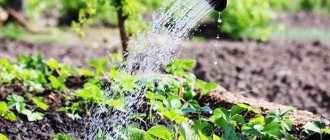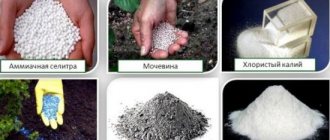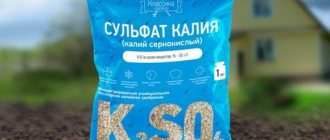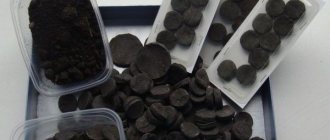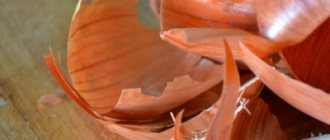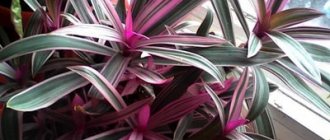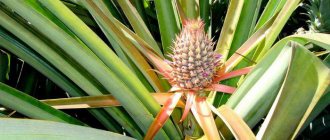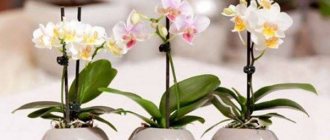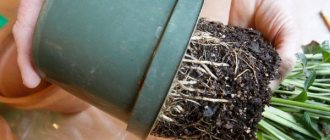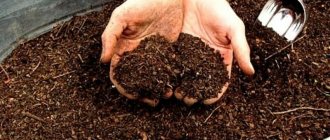Potassium-phosphorus fertilizers belong to mineral preparations. As the name implies, their main components are potassium and phosphorus, and complex types may include other substances. Such fertilizers are widely used by gardeners when growing flowering plants. During the period of laying and appearance of buds, they are recommended to be applied for the purpose of:
- increasing the number of buds;
- approaching flowering;
- extension of flowering time;
- giving flowers a brighter color;
- strengthening the root system;
- faster maturation of young shoots.
A feature of potassium-phosphorus fertilizers is that they do not contain nitrogen or have a small amount of it. This prevents the plant from redirecting its forces to growth to the detriment of flowering.
Among potassium-phosphorus fertilizers for flowering plants, the following preparations have proven themselves well:
- monopotassium phosphate;
- nitrophoska;
- nitroammophoska;
- diammofoska;
- potassium-phosphorus mixture "Autumn".
Potassium monophosphate
Two-component mineral fertilizer contains phosphorus in half of its composition and slightly less potassium. It is used to prepare solutions when watering seedlings of flowering plants (10 g of the drug per bucket of water). Flowers growing in open ground are periodically fed with a more concentrated solution - 20 g of the drug per 10 liters of water.
Indications for use
A lack of potassium, nitrogen, and phosphorus is indicated by such signs as:
- deformation of foliage, appearance of dark, yellow spots;
- slowing down or completely stopping growth;
- lack of new shoots, buds;
- thinning, fragility of stems;
- premature cessation of flowering.
It is important to prevent oversaturation of the soil with the main components of fertilizers of this type. Signs of excess potassium and phosphorus are death of roots, shortening of internodes, deterioration in the quality of green mass and flowers, death of apical shoots, thinning, burning of leaves.
The drug "Autumn"
The drug contains 18% potassium, 5% phosphorus, as well as calcium, magnesium and boron. Dry powder is added to the soil during the autumn digging of the area where they plan to grow ornamental plants, at the rate of 35 g per 1 square meter. m.
During flowering, immediately before watering, add 15 g of the drug per 1 square meter. m, and to improve the winter hardiness of perennial crops after flowering, they are fertilized with 30 g for the same area.
Seeds are soaked in the solution of the drug before planting, and flowers are also watered at the root.
Nitroammophoska and nitrophoska
Nitroammofoska is a popular and effective fertilizer. It contains potassium, nitrogen and phosphorus. The drug is sold in granular form. Most often used before or during sowing. The solution is an additional feeding. In nitroammophoska, the main components are very concentrated. Nitrogen is easily absorbed by plants. Phosphorus is contained in the form of monocalcium phosphate, ammonium phosphate and dicalcium phosphate. The number of main components varies and is labeled accordingly. The most popular brand is 16-16-16 with the same content of potassium, nitrogen and phosphorus.
Nitroammofosk has a number of advantages:
- high concentration product;
- granules can be stored for a long time without caking;
- each granule contains the main components;
- quickly dissolves in water;
- increases productivity.
However, fertilizer also has several disadvantages:
- nitrates are formed in the soil;
- inorganic substance;
- It is highly flammable, so the substance should not be heated.
Nitroammophoska is suitable for clay soils and chernozems. The speed and difficulty of penetration of the drug depends on how dense the soil is. For this reason, it is recommended to apply fertilizers to clay soil in the fall, and to light (sandy) soil in the spring.
Nitrophoska is a classic mineral fertilizer. It contains three main components that plants need most to develop and grow: potassium, nitrogen and phosphorus. These components are included in nitrophoska in the form of salts: potassium nitrate, calcium chloride, ammophos, superphosphate, precipitate, ammonium chloride, ammonium nitrate.
The percentages of potassium, nitrogen and phosphorus may vary. In accordance with this, the product is labeled. To feed garden crops, use the 16-16-16 brand, that is, the one where the main components are contained in the same quantity.
Nitrophoska can be of different types. It is divided into groups depending on the use of the product and the method by which it is obtained.
The main types of nitrophoska are:
- Sulfate. It contains a large amount of calcium, which stimulates flowering. Therefore, the sulfate variety is suitable for ornamental shrubs, trees and flowers.
- Sulfate. Added at the time of planting. It is used to feed cucumbers, tomatoes, beans, and cabbage. Sulfur forms plant-type proteins. It prevents pests due to its fungicidal action.
- Phosphorite. It is used to feed tomatoes, since the main substance in the preparation is phosphorus, thanks to which fiber is better absorbed. Timely application of fertilizer guarantees a high-quality and abundant harvest. In addition, the tomatoes will be stored in good condition longer.
The importance of phosphorus for plants
Phosphorus is essential for plant nutrition. It takes an active part in most metabolic processes - energy, metabolic, reproduction and division. Without it, the processes of respiration, photosynthesis, and fermentation are impossible. Helps regulate the permeability of cell membranes.
Phosphorus is especially needed for fruits and flowers , such as decorative flowers such as violets. It accelerates their formation and improves the decorative qualities of plants.
The root system ensures good branching and proper growth, as a result of which the plant acquires all the necessary substances in sufficient quantities. Increases cold resistance and provides resistance to lodging.
For which crops is it suitable?
The development of strong plants is a consequence of the correct application of nutrients. Thus, phosphorus is necessary for general strengthening, making the crop resistant to diseases, frost, and mechanical damage.
Potassium is needed for an abundance of fruits, budding, and flowering. But not every vegetable/fruit or flower will respond well to regular feeding.
There are also those that are quickly saturated with microelements. And when phosphorus-potassium fertilizer is applied again, they lose their shape, color, weaken, and stop development.
Garlic
The crop requires constant application of phosphorus-potassium fertilizers. Applications are planned regardless of the growth stage or appearance of the garlic (green part).
Feed taking into account the recommended dosages on the package. The introduced substances provide crops with a marketable appearance and increase productivity.
cucumbers
Having noticed a stop in the growth of cucumber bushes, thinning and deterioration of the shoots, it’s time to act. This is a direct indicator of a lack of microelements in the soil.
During the growing season, the crop consumes a lot of substances from the soil. Therefore, fertilizing in the form of phosphorus-potassium fertilizers is carried out up to 4 times per season.
You can choose both single preparations and complexes for feeding. But before using, make sure that the problem is insufficient phosphorus or potassium. Look for a clue on the foliage:
- the crop sheds its leaves, thin shoots, wilts - phosphorus is needed;
- the green part acquires a bluish tint, and bronze-colored spots appear. Weak ovary - potassium in the soil has dried up.
Tomatoes
Phosphorus-potassium fertilizers are extremely important for tomatoes. If one of the microelements is not enough in the soil, the root system deteriorates. The consequences will be:
- fruit deformation;
- loss of shape;
- the appearance of spots on the green part;
- spots like burns are observed on the skin of tomatoes;
- tomatoes stop growing, which leads to the removal of unripe fruits.
The feeding procedure with phosphorus-potassium preparations is recommended in the first stages of development. Complex substances and single agents are suitable.
Grape
The amount of phosphorus-potassium fertilizers applied to the grapevine depends on the type of soil. Therefore, some sources recommend the procedure periodically (1-2 times every three years), while others recommend a full-fledged method.
What are the dangerous disadvantages of potash fertilizers?
Potassium deficiency in the soil is no less dangerous. It leads to the following negative changes:
- The reproductive function of plants deteriorates: they practically do not form buds, the fruits do not set, do not ripen or become smaller.
- The risk of developing fungal infections increases significantly.
- Plants become vulnerable to various pests.
- Crops begin to tolerate low temperatures poorly.
If you don’t know how to recognize potassium deficiency in plants, then take a closer look at their appearance:
- The main symptom is the formation of a marginal burn on the leaf blades. The leaves around the edges become brown, as if burned. This is especially noticeable on the lower elements.
- Traces of rust also appear on the leaves.
How to make phosphorus fertilizer at home?
There are a number of plants that accumulate phosphorus inside the stem and leaves. The most common and rich in minerals are wormwood, creeping thyme, and rowan berries. They make compost and get an excellent natural phosphorus fertilizer with your own hands.
Fertilizers containing potassium and phosphorus of natural origin. These include wood ash. It has many advantages:
- It quickly penetrates the soil.
- The elements in it have a shape that quickly reaches the root system.
- This type of fertilizer can be actively used in any private farm.
- The effect of adding ash can last for several seasons. But it is better to fertilize at least once a year.
- It also contains other chemicals (nitrogen compounds, calcium, magnesium, zinc).
- It does not contain chlorine or chloride compounds.
It often happens that ash accumulates throughout the winter, because stove heating is becoming increasingly popular. To preserve the fertilizer until summer, it must be sealed in glass containers (three-liter jars covered with plastic lids). If necessary, it is worth using ash from spring to late autumn. These supplies are enough to regularly feed the garden and garden.
How to properly apply ash-based fertilizers?
Let's look at how to use potassium-phosphorus fertilizers made by yourself to feed tomatoes. The recipe is very simple: add 2 liters of dry ash to 19 liters - 20 liters of water. Mix water with ash and let the solution sit for several hours. After 3 hours, you can stir the solution and start feeding. Add 0.5 liters of solution to each tomato bush. This fertilizing is done during the period before the bushes bloom.
Why feed plants with potassium-phosphorus fertilizers?
- Increase the number of flowers and shoots.
- Strengthen the root system.
- Increase plant resistance to fungal diseases.
- This type of fertilizer does not stimulate excessive growth of leaves and stems because it contains a small amount of nitrogen.
Foliar feeding: are they necessary?
Summer residents are often advised to use foliar feeding - at one or another stage of plant development. They say they increase productivity, improve the quality of fruits and provide many other useful things. Is it so? Yes, yes. But! Their effect is short-lived.
Firstly, the concentration of fertilizers for such fertilizing is reduced - otherwise the leaves can be burned.
Secondly, plants use them at once and immediately consume them, and then they will begin to starve again.
There is another problem. Phosphorus fertilizers are poorly soluble in water and can leave a coating on the leaves. Potassium ions are often ineffective because potassium ions are very large and difficult to penetrate into the leaf.
If you added phosphorus and potassium in the fall or spring in the recommended quantities, foliar feeding is not necessary. This is troublesome and can be dangerous - go too far with the dose and the plants will die. Foliar feeding can only help the average summer resident in one case - in cool weather, when the soil temperature drops and the roots are not able to obtain nutrients from the soil.
